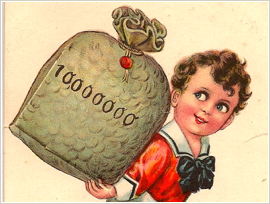Iniquities of the poll tax
In Scotland in 1989 Prime Minister Margaret Thatcher (re)introduced the Poll Tax or Community Charge as it was euphemistically known – the idea being to extend it later to England and Wales. Riots and mass demonstrations in London and other cities during 1990 led to the plan being abandoned and the tax collection stopped in Scotland. These events helped bring about the downfall of Mrs T. The tax consisted of a portioned, fixed amount per individual in accordance with the census (as opposed to a percentage of income) and was not exactly new - having been first levied in 1275 on the value of people’s movable goods. The tax continued in some form or other until the 17th century when it was discontinued until Maggie took it up again. My children at university in Scotland in the couple of years it was in force had to pay the hated poll tax (or rather their Dad did on their behalf!).
So it was with some interest that I came across a tome providing details of persons liable for the poll tax in the 17th century. Not only are there more than a few individuals with the same names as my ancestors from the region, but several Raitts are also mentioned in the List of Pollable Persons within the Shire of Aberdeen in the year 1696. The List was published in at least two volumes in 1844. Such documents can be very valuable not only in trying to identity family members, but also for affording an insight into who owned what, how people lived, the jobs they had (grassman for instance) and what amount of taxes they paid. Just to take (from volume 2) one entry for Meikle Follo in the parish of Fyvie, Presbytery of Turriff, shire of Aberdeen. This seems to have been a farm owned by three brothers Raitt.
The valuation of Meikle Follo is £104 Scots money, the hundreth part whereof is £1 10d. money forsaid, which is payable be the portioners following, to wit:
Be John Rait, portioner ther, of his valued rent is £34 13s. 4d. Scots, inde with the generall poll £1 6s 0d; Jean Findlater, his spouse 6s; John and William Raits, his sons, past sixteen years in familia 12s
Adam Hay, herd, twelve years of age, his summer fee is 4 merks (does not fee in winter, for nonage), inde with the generall poll 7s 4d
Beatrix Murray, servant, her years fee is £4, fortieth part and generall poll 8s
Robert Thomson, cottar (no trade), and Elspet Stewart, his spouse 12s
George Raitt, portioner ther, of his valued rent is £34 13s. 4d. Scots, inde with generall poll £1 6s; Jean Collinson, his spouse 6s; Robert and Elspet Raits, his children, past sixteen year's, in familia 12s
James Bruce, servant, his years fee is £10. fortieth part and generall poll 11s
William Watson, cottar (no trade) 6s
William Raitt, third portioner, his valued rent is £34 13s. 4d. Scots, inde with generall poll £1 6s; Marjorie Browne, his spouse 6s
George Rainey, herd, twelve years of age, his summer fee is £4 Scots (does not fee in winter for nonage), inde with generall poll 8s
Margaret Hay, servant, her years fee is £1, fortieth part whereof and generall poll 10s
Issobell Collinson, indweller there 6s
John and Janet Raits, past sixteen years of age, both in familia 12s
Total £10 0s 4d
Quite why Margaret Hay should pay more that Beatrix Murray who earned four times as much or than the brothers’ wives and children is probably just one of the iniquities of (tax) life that we complain of even today!
Monday, 29 November 2010

